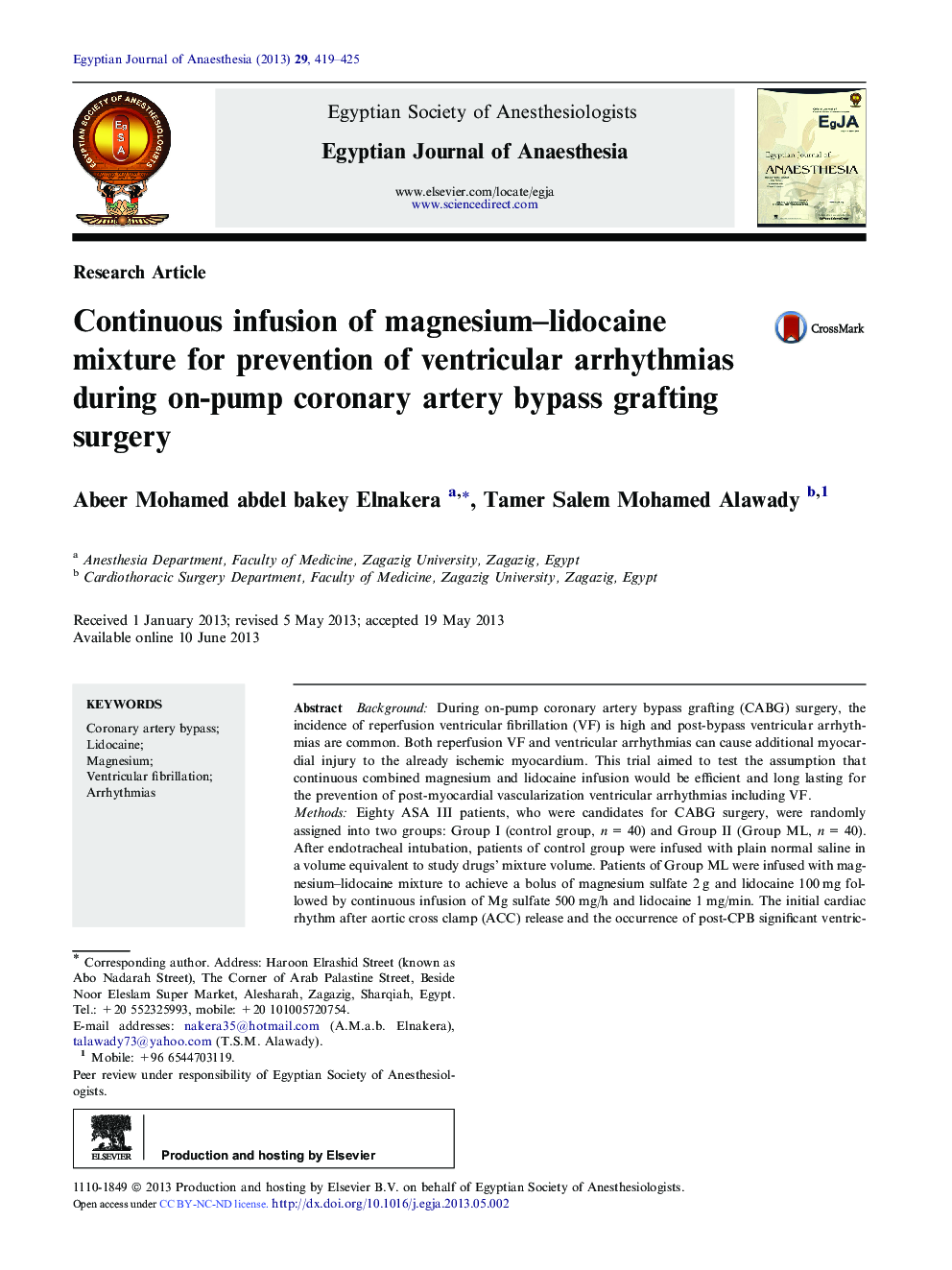| Article ID | Journal | Published Year | Pages | File Type |
|---|---|---|---|---|
| 2756374 | Egyptian Journal of Anaesthesia | 2013 | 7 Pages |
BackgroundDuring on-pump coronary artery bypass grafting (CABG) surgery, the incidence of reperfusion ventricular fibrillation (VF) is high and post-bypass ventricular arrhythmias are common. Both reperfusion VF and ventricular arrhythmias can cause additional myocardial injury to the already ischemic myocardium. This trial aimed to test the assumption that continuous combined magnesium and lidocaine infusion would be efficient and long lasting for the prevention of post-myocardial vascularization ventricular arrhythmias including VF.MethodsEighty ASA III patients, who were candidates for CABG surgery, were randomly assigned into two groups: Group I (control group, n = 40) and Group II (Group ML, n = 40). After endotracheal intubation, patients of control group were infused with plain normal saline in a volume equivalent to study drugs’ mixture volume. Patients of Group ML were infused with magnesium–lidocaine mixture to achieve a bolus of magnesium sulfate 2 g and lidocaine 100 mg followed by continuous infusion of Mg sulfate 500 mg/h and lidocaine 1 mg/min. The initial cardiac rhythm after aortic cross clamp (ACC) release and the occurrence of post-CPB significant ventricular arrhythmias were recorded.ResultsThe incidences of reperfusion VF and post-CPB ventricular arrhythmias in Group ML were significantly lower than that in control group (22.5% vs. 72.5%) (P < 0.001) and (7.5% vs. 25%) (P < 0.05), respectively. However, in Group ML, this beneficial effect was associated with higher incidence of sinus bradycardia (72.5% vs. 17.5%) and hence pacing needs (22.5% vs. 0.0%) when compared with control group.ConclusionOur study concluded that, during on-pump CABG surgery, the combined administration of magnesium and lidocaine as a bolus dose starting after intubation followed by continuous infusion reduced the incidence of reperfusion VF by 62% and post-CPB ventricular arrhythmias by 70% on expense of increased the incidence of sinus bradycardia and pacing.
